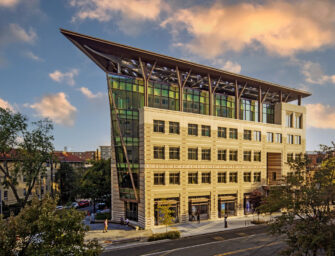Thank You for Submitting Session Proposals; Exciting New Opportunities at #AGU18
As hard as it may be to believe, AGU’s 2018 Fall Meeting is less than nine months away! When session proposals closed last week the diversity and number of submissions received made it obvious that you are just as excited and inspired as we are with this year’s theme: What Science Stands For.
AGU sends a big thank you to those involved with the more than 1300 session proposals we received. This included numerous sessions in AGU’s newest section, GeoHealth, as well as in the tutorial talks, the newest Fall Meeting presentation format. We also saw a surge of interest in our dynamic presentation formats, such as eLightning sessions. In celebration of the start of AGU’s Centennial, many sessions addressed the history, diversity, and transdisciplinary nature of Earth and space science, as well as progress over the next 100 years. And a large number of submissions focused on how Earth and space science informs and improves society, which is particularly apt given our given our 2018 host city.
Held for the first time in Washington, D.C., this year’s meeting is being organized to help attendees highlight the wonder, value and immediacy of Earth and space science research, and to show that science is strong, global and essential. We want you to be able to connect with the some of the world’s leading scientific minds at diverse U.S.-based federal agencies, private scientific institutions, and a wide array of embassies and other international institutions, as well as inform policy makers about the vital role of Earth and space science plays in our society. As we mark the advent of AGU’s Centennial, the Fall Meeting will celebrate the accomplishments of Earth and space scientists ― whose work over the last 100 years that has helped enhance global health and welfare, kickstarted innovation, and helped ensure the sustainability of the environment for future generations ― while also looking forward to the next century of discovery and advancement.
To make your Fall Meeting experience as exciting as possible, we will be featuring some unique programs that could only occur in the nation’s capital. AGU is hosting a “Night at the Museums.” Attendees and their families can enjoy after hours open houses at the some of the city’s most outstanding museums.
We will also be organizing field trips again in 2018. Attendees can explore local geology, delve into the many challenges facing the the largest estuary in the U.S., the Chesapeake Bay, or investigate the implications of climate change for the region’s mix of large coastal cities and dense agriculture. Even more locally, attendees can tour AGU’s newly renovated headquarters building. Incorporating ground-breaking and energy saving technologies, the building – Washington, D.C.’s first net zero energy renovated building – is a model for energy-efficient urban renovation and exemplifies values of scientific discovery while illustrating the impact of Earth and space sciences on society.
This is shaping up to be a banner year for the AGU Fall Meeting, and as December grows ever nearer, I encourage you to keep up with latest developments on the Fall Meeting website. In particular, I encourage you to consider submitting a proposal for our other new presentation format: scientific workshops. The site is now open for submissions.




There are no comments
Add yours